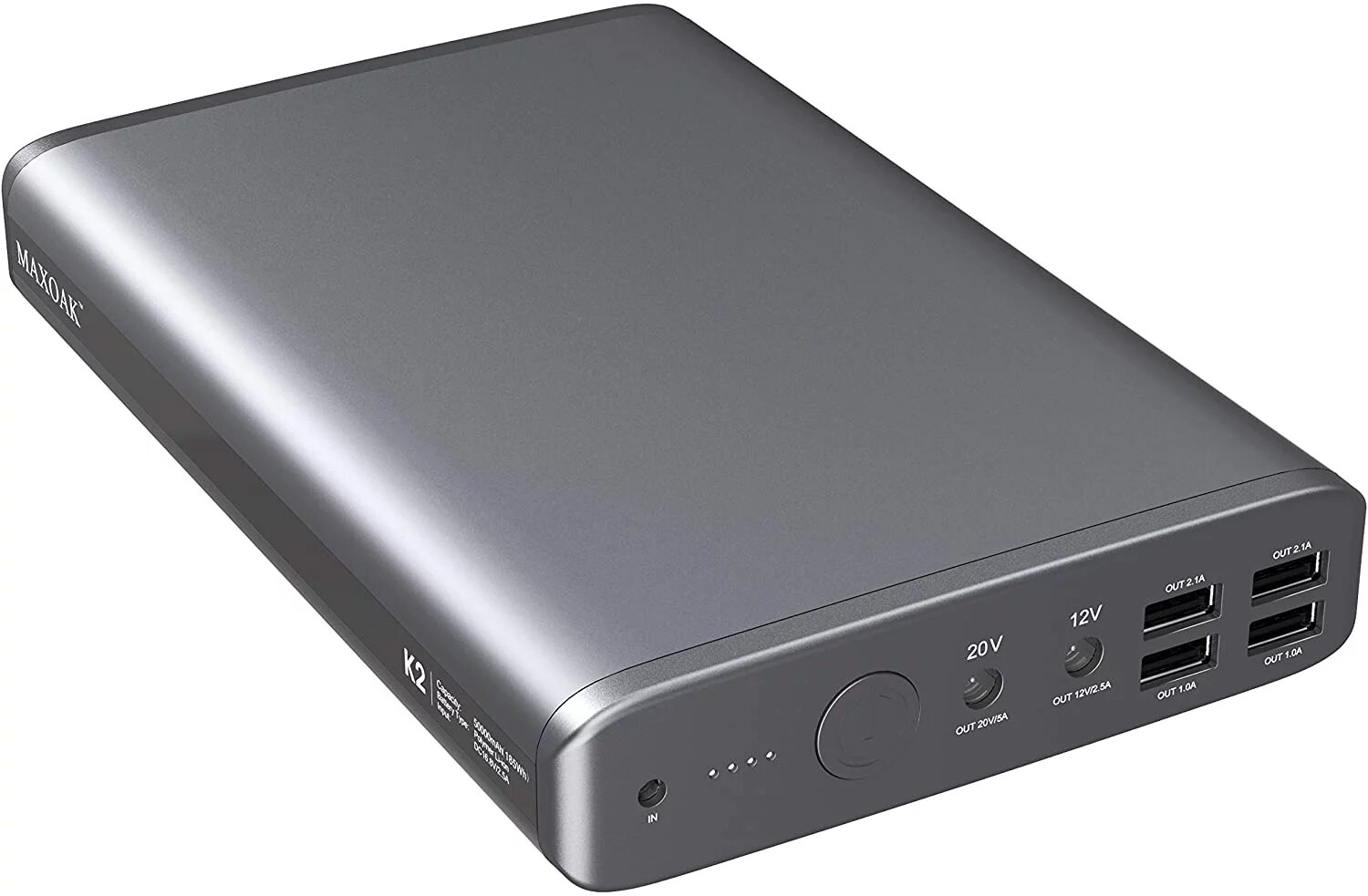Introduction
When it comes to managing personal finances, having a clear understanding of banking terms is crucial. One term that often comes up is “ODP,” which stands for Overdraft Protection. In the world of banking, ODP plays an important role in helping individuals avoid costly fees and navigate their financial transactions more efficiently.
But what exactly does ODP mean in banking? In simple terms, Overdraft Protection refers to a service offered by banks that allows individuals to link their checking accounts with a backup source of funds, such as a savings account or a line of credit. This protection serves as a safety net, preventing account holders from overdrawing their accounts and incurring substantial penalties.
For many people, ODP offers peace of mind and financial security, as it acts as an insurance policy against accidental overspending or unexpected expenses. By understanding the details and benefits of ODP, individuals can make informed decisions about whether to opt for this service and how it can potentially benefit their financial well-being.
In this article, we delve deeper into the meaning of ODP in banking, explore how it works, compare it to overdraft fees, discuss the eligibility requirements, and highlight the different types of overdraft protection available. By the end, you will have a comprehensive understanding of ODP and how it can be a valuable tool in managing your finances.
ODP Meaning
ODP, which stands for Overdraft Protection, is a banking service designed to prevent account holders from overdrawing their checking accounts and incurring hefty fees. It provides a safety net by linking a backup source of funds, such as a savings account or a line of credit, to the checking account.
In essence, ODP acts as a financial buffer, ensuring that transactions are approved even when there are insufficient funds in the account. Instead of being declined or resulting in costly overdraft charges, transactions are covered using the additional funds available through the linked backup source.
The primary purpose of ODP is to protect individuals from the inconvenience, embarrassment, and financial strain of having their transactions denied or incurring expensive overdraft fees. By having ODP in place, individuals can have peace of mind, knowing that they have a safety net to rely on if unexpected expenses or overspending occurs.
When an account holder signs up for ODP, they establish an agreement with their bank, which outlines the terms and conditions of the service. These terms may include fees associated with using ODP, the limit of funds available for overdraft protection, and any additional requirements or restrictions.
It’s important to note that ODP is not automatic; individuals must actively enroll in the service. Some banks offer ODP as an opt-in feature, while others may automatically provide it for certain account types. It’s always recommended to review your account agreement or consult with your bank to understand whether ODP is available and the specific terms associated with it.
Now that we understand the meaning of ODP, let’s explore the details of how it works and the benefits it offers.
Overdraft Protection Details
Overdraft Protection offers a range of details and features that account holders should be aware of. Understanding these details can help individuals make informed decisions about whether to opt for this service and how to effectively manage their finances.
First and foremost, one key aspect of overdraft protection is the availability of a backup funding source, which is linked to the checking account. This backup source can be a savings account, a line of credit, or an overdraft protection account. When a transaction exceeds the available funds in the checking account, the bank automatically withdraws funds from the linked backup source to cover the transaction.
Another crucial detail to consider is the fees associated with using Overdraft Protection. Banks typically charge a fee for each transaction that triggers the use of overdraft protection. It’s important to review the fee structure provided by your bank and consider how frequently you may need to use the service to determine if the cost is reasonable for your financial situation.
Limitations on the amount of funds available for overdraft protection is an essential aspect to consider as well. Banks may set a limit on the maximum amount that can be overdrafted, which can vary depending on factors such as account history and creditworthiness. Understanding this limit is critical to avoid potential declines if a transaction exceeds the available protection amount.
Account holders should also be aware of any specific requirements or restrictions associated with using Overdraft Protection. Banks may impose eligibility criteria, such as maintaining a minimum balance in the backup funding source or having a satisfactory credit score. It is important to thoroughly review the terms and conditions provided by your bank to ensure that you meet these requirements.
Lastly, it’s essential for account holders to regularly monitor their account activity and keep track of the funds available in both their checking account and the linked backup source. By staying informed and managing their finances responsibly, individuals can make the most of the Overdraft Protection service while avoiding any potential problems.
Now that we have explored the details of Overdraft Protection, let’s take a closer look at the benefits it offers.
Benefits of ODP
Overdraft Protection (ODP) provides several benefits to account holders, enhancing their financial management and reducing the risk of incurring overdraft fees. Let’s explore the key advantages of opting for ODP:
- Peace of mind: ODP offers peace of mind by acting as a safety net to cover transactions when there are insufficient funds in the account. It helps individuals avoid the stress and embarrassment of declined transactions and potential penalties.
- Financial flexibility: With ODP, account holders have the freedom to make necessary transactions, even if they don’t have enough funds in their checking account. This flexibility can be particularly helpful in situations where unexpected expenses arise.
- Protection against overdraft fees: By linking a backup funding source, ODP can save account holders from paying hefty overdraft fees. Instead of incurring these fees for each transaction, funds are automatically transferred from the backup source to cover the overdraft.
- Convenience and time-saving: ODP simplifies the banking process by automatically covering transactions that exceed the available funds. This eliminates the need for manual transfers or monitoring account balances closely for every transaction.
- Improved financial management: ODP serves as a tool for better financial management. Account holders can track their expenses, identify areas of overspending, and take steps to maintain a healthier financial situation.
- Prevents declined transactions: By having ODP in place, account holders can avoid declined transactions, ensuring that essential payments, such as bills or mortgage payments, are processed successfully.
Overall, ODP offers a layer of protection and convenience, enabling individuals to manage their finances more effectively. It provides a safety net for unexpected expenses, prevents costly overdraft fees, and promotes better financial management practices.
In the next section, we will delve deeper into how ODP works and its differences compared to overdraft fees.
How ODP Works
Understanding how Overdraft Protection (ODP) works is essential for account holders who want to make the most of this banking service. Here is a breakdown of how ODP typically functions:
1. Enrollment: To utilize ODP, account holders must enroll in the service. This can usually be done by contacting the bank directly or through online banking platforms. Some banks may automatically provide ODP for certain account types, while others may require account holders to opt-in.
2. Linking accounts: After enrolling in ODP, individuals need to link their checking account to a backup funding source. This backup source can be a savings account, a line of credit, or an overdraft protection account. The funds in the backup source will be utilized to cover any transactions that exceed the available balance in the checking account.
3. Transaction approval: When a transaction is made and exceeds the available funds in the checking account, ODP comes into play. Instead of the transaction being declined or resulting in an overdraft, the bank automatically withdraws the required funds from the linked backup source to cover the transaction.
4. Transfer of funds: The bank transfers the necessary funds from the backup source to the checking account to cover the transaction. This transfer may occur instantly or within a specified time frame, depending on the bank’s policies.
5. Accrual of fees: It’s important to note that using ODP may come with associated fees. Banks typically charge a fee for each transaction that triggers the use of overdraft protection. These fees may vary depending on the bank and the specific terms of the ODP agreement.
6. Repayment: Account holders are responsible for repaying any funds utilized from the linked backup source. The repayment terms depend on the agreement with the bank and may include interest or repayment requirements.
By understanding the process of how ODP works, account holders can better plan their finances, avoid declined transactions or expensive overdraft fees, and effectively manage their accounts.
In the next section, we will compare ODP with traditional overdraft fees to highlight the differences between the two.
ODP vs Overdraft Fees
When it comes to managing banking transactions, it’s important to distinguish between Overdraft Protection (ODP) and traditional overdraft fees. While both are related to account balances and transactions, there are significant differences between the two. Let’s compare ODP and overdraft fees to understand these distinctions:
1. Purpose: ODP is a proactive service that provides a safety net for account holders, ensuring that transactions are covered even if there are insufficient funds in the checking account. On the other hand, overdraft fees are charges incurred when a transaction is made without sufficient funds in the account, resulting in a negative balance.
2. Cost: Overdraft fees can be quite expensive, often ranging from $25 to $35 per transaction. These fees are charged for each transaction that exceeds the available balance, potentially resulting in a significant financial burden for account holders. ODP, on the other hand, involves fees as well, but they are typically lower and can vary depending on the bank and the specific terms of the service.
3. Approval: ODP is an approved service where transactions that exceed the available funds in the checking account are covered automatically by utilizing the linked backup funding source. In contrast, if an account does not have ODP or sufficient funds to cover a transaction, it may be declined, resulting in a failed transaction or returned check.
4. Repayment: With ODP, when the backup funding source is utilized to cover a transaction, individuals are responsible for repaying those funds to the linked account. Repayment terms vary depending on the bank and the agreement, and may include interest or repayment requirements. Overdraft fees, however, are charges levied by the bank and do not require direct repayment.
5. Opt-in or automatic: ODP usually requires account holders to actively enroll or opt-in for the service. It may not be automatically provided by the bank unless explicitly requested. On the other hand, overdraft fees can be automatically applied to an account when a transaction is made without sufficient funds, regardless of whether the account holder has enrolled in ODP.
By comparing ODP and overdraft fees, individuals can make informed decisions about which option is best suited to their financial needs and situation. ODP offers the advantage of proactive transaction coverage and lower fees compared to the potentially costly overdraft fees.
Next, we will explore the eligibility requirements for ODP to understand who can benefit from this service.
Eligibility for ODP
While Overdraft Protection (ODP) can be a valuable service, not all individuals may be eligible to enroll in or benefit from it. Banks typically have specific eligibility criteria for ODP, which account holders must meet to qualify for the service. Here are some common factors that may determine eligibility:
- Account type: ODP may be available for specific types of accounts, such as personal checking accounts or certain account packages offered by the bank. It’s important to check with your bank to understand which types of accounts are eligible for ODP.
- Account history: Banks may consider the account holder’s history, including their previous banking transactions and account balances, to assess eligibility for ODP. A positive account history and a track record of responsible financial management may increase the chances of qualifying for the service.
- Creditworthiness: Some banks may review the creditworthiness of the account holder before offering ODP. Factors such as credit score, credit history, and overall financial standing may be considered in determining eligibility. However, ODP is often available to individuals with both good and less than perfect credit scores.
- Minimum balance requirements: Banks may require a minimum balance in the linked backup funding source, such as a savings account or a line of credit, to qualify for ODP. It’s important to understand and comply with any minimum balance requirements set by the bank to be eligible for the service.
It’s worth noting that the specific eligibility requirements for ODP can vary from one bank to another. Therefore, it’s essential to consult with your bank directly or review the terms and conditions provided by the bank to understand the exact criteria you need to meet.
Even if individuals meet the eligibility requirements for ODP, it doesn’t necessarily mean that they will be automatically enrolled. Some banks may offer ODP as an opt-in service, requiring account holders to actively enroll in the program. Others may automatically provide ODP for certain account types but allow account holders to opt-out if desired.
By understanding the eligibility requirements and enrollment process for ODP, individuals can determine if they qualify for the service and take the necessary steps to enroll if it aligns with their financial needs.
Next, we will explore how ODP is implemented and integrated into the banking system.
ODP Implementation
The implementation of Overdraft Protection (ODP) within the banking system involves several key steps to ensure its proper functioning and integration. Here’s a closer look at how ODP is implemented:
1. Bank policy and decision: Banks establish policies and make decisions regarding ODP implementation. They determine whether ODP will be offered to customers, the eligible account types, the associated fees, and any specific requirements for enrollment.
2. Customer enrollment: Account holders who are interested in utilizing ODP must actively enroll in the service. The enrollment process may vary depending on the bank, but it typically involves contacting the bank directly or utilizing the online banking platform to express interest in ODP.
3. Linking backup funding source: Once enrolled in ODP, account holders must link a backup funding source to their checking account. This backup funding source can be a savings account, a line of credit, or an overdraft protection account. Establishing this link allows funds to automatically be withdrawn from the backup source to cover transactions that exceed the available balance in the checking account.
4. Transaction processing: When a transaction is initiated that exceeds the available funds in the checking account, the bank’s systems identify the overdraft and access the linked backup funding source to cover the transaction. This process can happen seamlessly and quickly, ensuring a smooth transaction experience for customers.
5. Fee assessment: Banks may charge fees associated with utilizing ODP. These fees are typically applied per transaction and are assessed to the account holder. The specific fee structure and amounts are determined by the bank and are outlined in the terms and conditions of the ODP agreement.
6. Account monitoring and repayment: It is the responsibility of the account holder to monitor their account activity and ensure proper management of their finances. If ODP is utilized and funds are withdrawn from the backup funding source, the account holder is responsible for repaying those funds based on the terms and conditions agreed upon with the bank.
By implementing ODP, banks aim to provide a more reliable and convenient banking experience for their customers. ODP adds a layer of protection and flexibility, enabling account holders to make transactions even when there are insufficient funds in their checking accounts.
In the next section, we will explore the different types of overdraft protection available to account holders.
Types of Overdraft Protection
When it comes to Overdraft Protection (ODP), different types of options are available for account holders to choose from. These options can vary depending on the bank and the specific services offered. Let’s explore some common types of overdraft protection:
1. Savings account overdraft protection: This type of overdraft protection involves linking a savings account to the checking account. When a transaction exceeds the available balance in the checking account, funds are automatically transferred from the linked savings account to cover the transaction. This option is convenient for individuals who have a sufficient savings balance and want to utilize it as a backup source for overdraft protection.
2. Line of credit overdraft protection: With this type of overdraft protection, individuals are approved for a line of credit that acts as a backup funding source for their checking account. When a transaction exceeds the available balance, funds are automatically borrowed from the line of credit to cover the overdraft. Account holders are then responsible for repaying the borrowed funds, subject to applicable interest and terms of the line of credit.
3. Overdraft protection account: Some banks offer specific accounts designed for overdraft protection. These accounts work by automatically transferring funds from the overdraft protection account to cover transactions that exceed the available balance in the checking account. The overdraft protection account may have its own separate balance and may also be subject to fees and interest charges.
4. Courtesy overdraft: Some banks provide the courtesy of approving certain transactions that exceed the available balance in the checking account, even if there is no specific ODP or linked backup source. However, this option usually comes with high fees and should be used sparingly as a last resort.
It’s important to note that the availability of these types of overdraft protection may vary depending on the bank and the specific terms and conditions offered. Account holders should consult with their banks to understand which options are available and how they can best utilize them to manage their accounts effectively.
Now that we have explored the different types of overdraft protection, let’s examine the limitations associated with ODP.
ODP Limitations
While Overdraft Protection (ODP) provides numerous benefits, it is important to be aware of its limitations. Understanding these limitations can help account holders make informed decisions and use ODP responsibly. Here are some important limitations to consider:
1. Linked backup funding sources: ODP requires account holders to link a backup funding source, such as a savings account or line of credit. If the backup source does not have sufficient funds or credit available, ODP may not be able to cover the transaction. It’s essential to regularly monitor and maintain adequate funds in the linked backup source to ensure uninterrupted protection.
2. Fees: Banks typically charge fees for utilizing ODP. These fees can vary depending on the bank and the specific terms of the ODP agreement. Account holders should carefully review the fee structure and consider the potential costs associated with using ODP, especially if they anticipate frequent overdraft situations.
3. Creditworthiness: Some banks may consider the creditworthiness of the account holder when determining eligibility for ODP. This means that individuals with lower credit scores or credit challenges may have limited options or face higher fees when utilizing ODP. It’s important to understand the credit requirements set by the bank to determine eligibility and any potential impact on fees.
4. Overdraft limits: Banks may set limits on the amount of funds available for overdraft protection. This limit can vary depending on factors such as account history, creditworthiness, and individual circumstances. Account holders should be aware of the overdraft limits set by their bank to prevent declined transactions when exceeding the available protection amount.
5. Repayment obligations: When ODP is utilized, it’s crucial to promptly repay the funds utilized from the linked backup source. Failure to repay these funds within the agreed-upon terms can result in additional fees or consequences. It’s essential to understand the repayment requirements and ensure that the necessary funds are available to repay any borrowed amounts.
By understanding the limitations of ODP, account holders can use the service responsibly and proactively manage their finances. Regularly monitoring account balances, maintaining adequate funds in the backup source, and adhering to the repayment commitments are important to maximize the benefits of ODP while minimizing its limitations.
Now that we have explored the limitations, let’s summarize the key points discussed in this article.
Conclusion
Understanding Overdraft Protection (ODP) is crucial for managing personal finances and avoiding costly fees. ODP serves as a safety net, allowing account holders to link their checking accounts to a backup funding source, such as a savings account or line of credit. This backup source covers transactions that exceed the available funds in the checking account, preventing account holders from experiencing declined transactions or incurring hefty overdraft fees.
Throughout this article, we explored the meaning of ODP in banking and learned about its implementation, benefits, and limitations. We discussed how ODP works, including the enrollment process, linking backup funding sources, transaction approval, and repayment responsibilities. We also compared ODP to traditional overdraft fees, highlighting the differences between the two.
The benefits of ODP are evident, offering peace of mind, financial flexibility, protection against overdraft fees, convenience, and improved financial management. By utilizing ODP, individuals can have greater control over their finances and avoid the stress associated with declined transactions or financial setbacks.
However, it’s important to be aware of the limitations of ODP, such as the need for available funds in the backup source, associated fees, creditworthiness considerations, overdraft limits, and repayment obligations. Understanding these limitations can help individuals use ODP responsibly and effectively.
If you are interested in ODP, reach out to your bank to determine your eligibility and explore the different types of overdraft protection options they offer. Carefully review all terms and conditions associated with ODP, including fees, repayment terms, and any requirements. By being knowledgeable and proactive, you can make informed decisions to safeguard your finances.
Remember, ODP is just one tool available to manage your banking transactions. It’s important to practice good financial habits, track your account balances regularly, and budget effectively to maintain financial stability.
With a clear understanding of ODP, you can make confident decisions about your financial well-being and utilize this valuable service to its full potential.

























